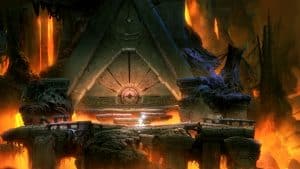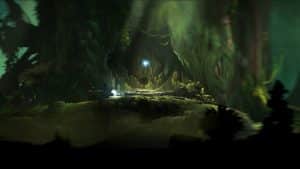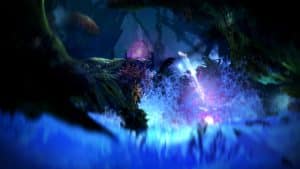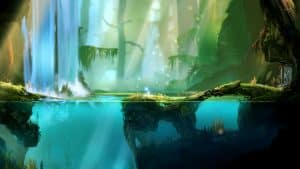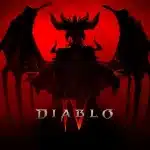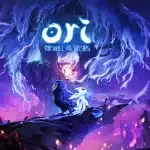Ori and the Blind Forest
Related Games
Description
🔥 What is Ori and the Blind Forest for PC
Ori and the Blind Forest is a visually breathtaking and emotionally charged action-platformer developed by Moon Studios and published by Microsoft Studios. It tells a wordless yet profoundly moving story about love, loss, and the persistence of hope within a mystical forest that feels both ancient and alive. The game seamlessly merges fluid platforming, puzzle-solving, and light combat within an exquisitely hand-painted world that has become one of the most memorable in modern gaming.
Set in the decaying forest of Nibel, players follow Ori, a small guardian spirit separated from its family, and Sein, a wisp-like companion representing the forest’s light. Together, they embark on a journey to restore the forest’s life force, confronting both natural hazards and ancient guardians. Through this quest, the player experiences a deeply emotional narrative that wordlessly explores themes of connection, sacrifice, and renewal.
Ori and the Blind Forest combines precision gameplay with breathtaking art direction and a haunting orchestral score, creating a rare harmony between visual beauty and mechanical challenge. It’s both a test of skill and a story of resilience, a blend that makes it stand out as a defining title in the “Metroidvania” genre.
👉 Features of Ori and the Blind Forest
Hand-Painted Visual Masterpiece
The visual presentation of Ori and the Blind Forest is one of its most defining traits, crafted with the care of a living painting. Each frame feels like a watercolor illustration come to life, full of soft lighting, layered scenery, and subtle animation.
The way the world shifts and breathes is almost tangible: trees sway under moonlight, rain trickles down mossy roots, and the distant glow of magical energy gives the forest an ethereal pulse. This attention to environmental storytelling makes exploration feel poetic, not just mechanical.
Emotional Storytelling Without Words
Rather than relying on dialogue, Ori and the Blind Forest tells its story through gestures, animation, and the sweeping power of its orchestral soundtrack. The game communicates grief, courage, and redemption entirely through visuals and music, proving that emotion transcends language.
The introduction sequence alone has become legendary among players, setting the emotional tone with cinematic animation that rivals a Pixar short. Every narrative beat is reinforced by Gareth Coker’s score, which captures both heartbreak and hope in perfect harmony.
Precision Platforming and Fluid Controls
At its core, Ori and the Blind Forest is about movement. The game’s platforming mechanics are designed to feel almost balletic, with Ori darting, leaping, and climbing through intricate levels.
Each new ability, like wall-jumping, gliding, or the ingenious “Bash” move that lets Ori ricochet off enemies and projectiles, expands how players interact with the environment. The result is a constant sense of progression and mastery that rewards both precision and creativity.
Challenging Yet Fair Design
Ori and the Blind Forest demands focus and patience, yet its difficulty rarely feels punishing for the sake of it. Every obstacle is built with intention, testing reflexes and timing while offering fair opportunities to learn from failure.
The “soul link” save system allows players to create checkpoints anywhere, giving them freedom to experiment without excessive frustration. It’s a thoughtful mechanic that complements the game’s flow, letting challenge coexist with accessibility.
Unforgettable Soundtrack and Atmosphere
The soundtrack, composed by Gareth Coker, is an emotional powerhouse that amplifies every moment of Ori’s journey. Strings swell during escapes, quiet piano themes linger during reflection, and choral harmonies infuse even simple moments with weight.
Combined with environmental sound design, rustling leaves, echoing caverns, distant storms, the result is a world that feels alive in both tone and rhythm. The music doesn’t just accompany gameplay; it shapes the experience itself.
Gameplay
Movement as Expression
Ori and the Blind Forest’s gameplay is defined by movement that feels almost alive, blending speed, agility, and precision into a single rhythm. Each jump, glide, and climb is tuned to perfection, creating a sensation of dancing through the environment rather than merely traversing it.
Players gradually unlock new abilities through a progression system tied to exploration, encouraging backtracking and discovery in the best Metroidvania fashion. The pacing ensures that every new skill feels earned, each opening new paths and possibilities that redefine how familiar areas can be approached.
Puzzles, Combat, and Exploration
The game’s structure balances platforming with gentle combat and environmental puzzles. While Ori can unleash light-based attacks through Sein, most encounters focus on evasion and clever use of movement rather than brute strength.
Puzzles often involve manipulating environmental elements using energy cells, triggering switches, or redirecting projectiles to open new areas. The design encourages observation and timing, rewarding players who engage thoughtfully with the world rather than rushing forward.
Iconic Escape Sequences
Among the game’s most memorable moments are its heart-pounding escape sequences, where the environment itself becomes the antagonist. These sequences, often following major boss encounters or story revelations, demand perfect execution of the skills learned so far.
The Ginso Tree escape remains one of gaming’s most talked-about sequences, combining rising water, collapsing platforms, and swelling music into a single cinematic experience. These moments transform the player’s mastery of mechanics into pure emotional payoff.
Graphics
A Living Painting
Ori and the Blind Forest stands as one of the most visually stunning indie games ever created, blending painterly backgrounds with dynamic lighting and parallax effects that make the world feel multidimensional. Every frame seems hand-painted, full of color gradients, soft blurs, and natural light that shifts as Ori moves through the forest.
The attention to detail is extraordinary: bioluminescent plants pulse in rhythm, shadows ripple across leaves, and the glow from Ori’s body illuminates the path forward. It’s the kind of world you don’t just play through, you inhabit.
Animation and Environmental Design
The fluidity of Ori’s animation is another high point, giving weight and momentum to every action. Whether Ori dashes across roots or performs a midair Bash, the transitions between animations are seamless, maintaining immersion through movement.
The environments are carefully layered, each biome telling its own story through color and architecture. From the icy caverns of Forlorn Ruins to the fiery chaos of Mount Horu, each location feels distinct yet part of a cohesive ecosystem that reacts to Ori’s journey.
Lighting, Color, and Emotion
Lighting is used not merely for beauty but for emotional resonance. Cool blues dominate moments of sadness, warm oranges accompany triumph, and piercing white light signals moments of revelation or rebirth.
This color storytelling, paired with atmospheric particle effects and depth of field techniques, ensures that every visual change mirrors Ori’s emotional arc. The result is a world that feels alive in both aesthetic and feeling.
Pros and Cons
✔️ Pros
- Stunning Art Direction: Every frame looks like a painting brought to motion.
- Fluid and Responsive Controls: Platforming feels intuitive, empowering, and endlessly satisfying.
- Emotional Storytelling: The narrative reaches deep emotional levels without relying on dialogue.
- Masterful Soundtrack: Gareth Coker’s score perfectly complements the gameplay and world.
- Balanced Challenge: Difficult yet fair, with smart checkpointing and gradual skill progression.
❌ Cons
- High Difficulty Spikes: Some sequences, especially escapes, may frustrate less experienced players.
- Limited Combat Depth: Fighting mechanics remain secondary to movement and exploration.
- Backtracking Fatigue: While rewarding, exploration can occasionally feel repetitive late in the game.
ℹ️ Game information
⭐ Installation Instructions
- The game is fully complete, you just need to install it, so there is no need to unpack it or download it from other sources.
- Just run the Ori and the Blind Forest.exe installation file.
- Simply launch the game from shortcut desktop.
⚙️ System Requirements
✅ Minimum:
- OS: Windows 7
- Processor: Intel Core 2 Duo E4500 @ 2.2GHz / AMD Athlon 64 X2 5600+ @ 2.8 GHz
- Memory: 4 GB RAM
- Graphics: GeForce 240 GT / Radeon HD 6570 – 1024 MB (1 GB)
- DirectX: Version 9.0c
- Network: Broadband Internet connection
- Storage: 8 GB available space
✅ Recommended:
- OS: Windows 7
- Processor: Intel Core i5 2300 / AMD FX6120
- Memory: 4 GB RAM
- Graphics: GeForce GTX 550 Ti / Radeon HD 6770
- DirectX: Version 11
- Network: Broadband Internet connection
- Storage: 8 GB available space
Images
